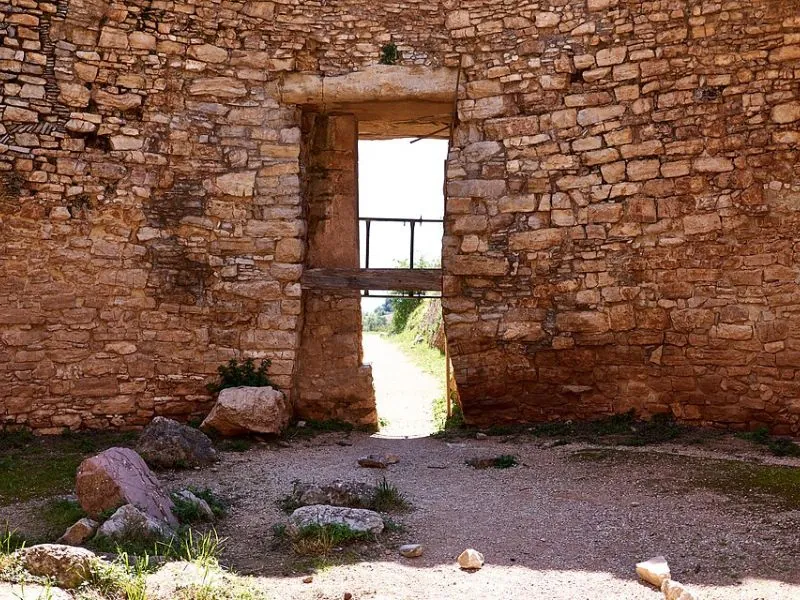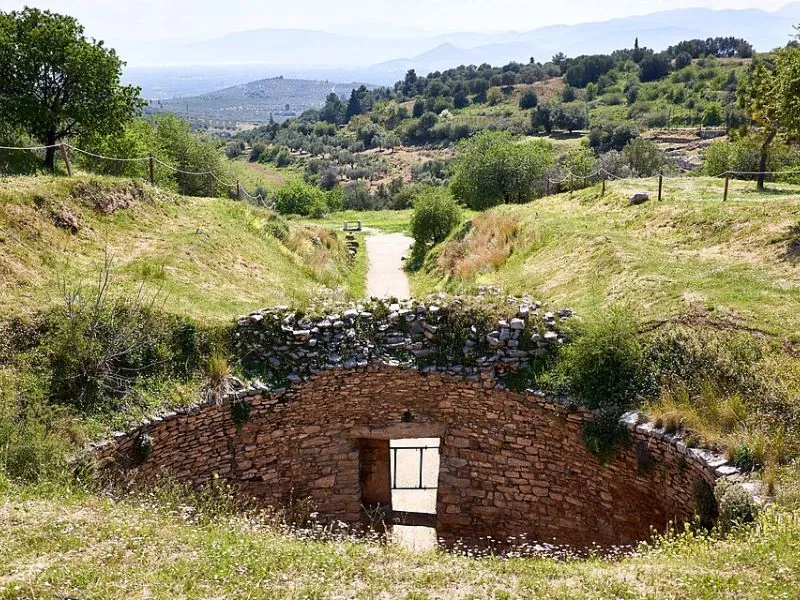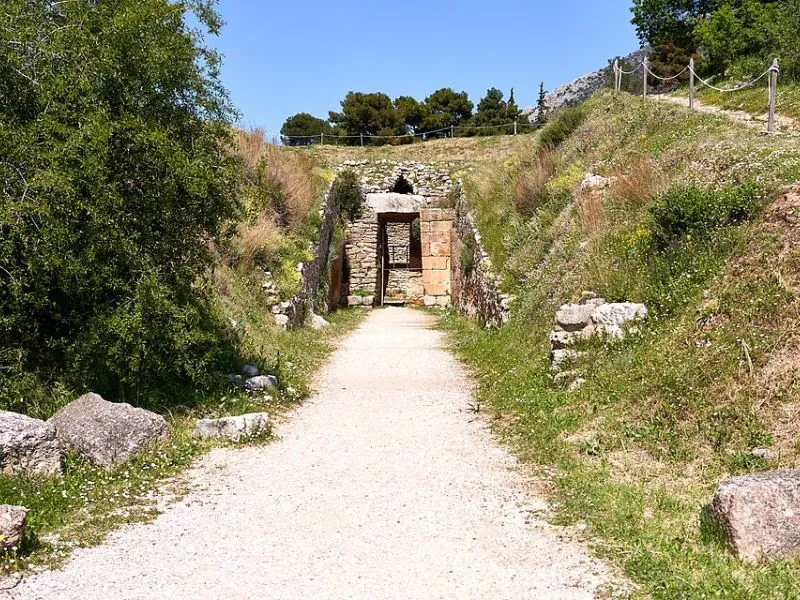
Before the giant Treasury of Atreus dominated guidebooks, the Tholos Tomb of Aegisthus in Mycenae broke new ground in Bronze-Age Greece.
Raised c. 1510 – 1450 BCE (Late Helladic IIA), it is the third-largest beehive tomb at the site and the first to experiment with architectural tricks—an ashlar-faced façade, rubble-lined passage and a relieving triangle—that later became standard.
Although no bones remain, the empty chamber still whispers of a society shifting from modest shaft graves toward monumental, above-ground displays of royal power.

A gently sloping 22.5 m dromos, 4.6 m wide, channels visitors between rubble-packed retaining walls. Near the door, masons upgraded to neat poros-stone ashlar—an aesthetic flourish foreshadowing later tholoi. The dromos terminates in a 2.5 m-wide doorway framed by blocks of polished conglomerate.
Above the 5-ton lintel a small triangular void redirects weight onto the jambs. This is the earliest relieving triangle at Mycenae, a practical solution later enlarged for the Lion Gate and Treasury of Atreus.
Inside, the beehive chamber (Ø 13.96 m; est. height ≈ 13 m) once rose 33 concentric rings of limestone. Rough-dressed blocks attest to a “prototype” phase; later tombs would switch to perfectly sawn courses. Today only about 8 m of the dome survives, but the corbelled rings still curve overhead like a stone galaxy.

Digging the thalamos and dromos displaced nearly 2,400 m³ of earth—work Wace estimated as 240 day-shifts for a ten-person crew, not counting quarrying and hauling. Builders cut the chamber into the hillside, erected the rubble dome via an earthen ramp, then dressed the stomion in poros ashlar.
Finally, they added the ashlar façade—either immediately (as structural buttress) or in a swift second phase to “modernise” the entrance in line with fresher fashions. The result is a hybrid: part early beehive, part dress rehearsal for the monster tombs to come.
Although ancient robbers stripped most valuables, Lamb’s dig salvaged hints of the original burial set:
These finds, older than objects in later tholoi, show the tomb hosted one of the first generations to abandon shaft graves for beehive architecture.
In the 16th century BCE, Mycenaean elites still buried kin in shaft graves inside Grave Circles A and B. Within a century they demanded bigger statements—high-visibility domes that advertised lineage to every traveler on the Argive Plain.
The Tholos Tomb of Aegisthus in Mycenae captures that pivot: it sits one foot in the past (rubble masonry, modest size) and one in the future (ashlar showmanship, relieving triangle, imported bling).
Greek myth remembers Aegisthus as the usurper who murdered Agamemnon and ruled Mycenae until Orestes took revenge. The tomb’s modern name piggy-backs on nearby “Treasury of Atreus” and “Tomb of Clytemnestra,” yet no inscription ties any tholos to a legendary owner.
Absence of bones leaves the occupant unknown—perhaps an early wanax, perhaps a queen, perhaps emptied before secondary use. The label endures because stories stick better than catalogue numbers.

Concrete collars shored up a cracked lintel in 1915; Wace’s crew dug a drainage trench in 1923; 1990s works reinforced the stomion and mapped masonry with 3-D scans. Today photogrammetry projects monitor micro-movements in the corbel rings, ensuring the fragile dome endures another 3,000 years.
Half-prototype, half-trendsetter, the Tholos Tomb of Aegisthus in Mycenae launched the architectural arms race that culminated in the Treasury of Atreus.
Its rubble walls, modest ashlar façade and pioneering relieving triangle document a society learning to project power through stone—and foreshadow the classical temples that would one day crown Greek hillsides.
Stand in its shadow and you feel the moment Bronze-Age engineers first imagined a monument big enough to house both their dead and their ambitions.